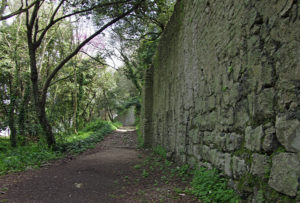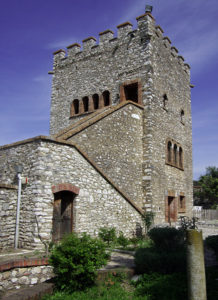Butrint is on every tourist itinerary to Albania and is a wonderful setting among deciduous woodland on a small headland overlooking the Vivari Channel linking Lake Butrint to the sea. It is a World Heritage Site and has a history stretching from the C7th BC until the C15th. It is the best studied ancient site in Albania and was first excavated by the Italians in the 1920s, with further detailed excavations since 1994.
To understand the site, you need to know about its history to put what you see into context.
The site dates back to the C7th BC but has changed and been redeveloped to meet the needs of different waves of settlers. The site began as a Hellenic shrine in the C7th BC with temples dedicated to Asclepius, the Greek God of medicine. Worshippers came to the sanctuary to be healed, leaving symbolic objects and money to the god and his attendant priests.
By the C4th and C3rd BC, Butrint had grown in importance and was fortified by a wall with five gateways. It became the trading port for Corfu, 1.5 miles way across the sea.
The Romans arrived in the C2nd BC and Julius Caesar established a colony for veterans here. Part of the shrine area was dismantled to build the theatre. Many villas and public bath houses were built and an aqueduct brought water from the mountains to Butrint. The Romans also built a settlement across the Vivari Channel reached by a bridge.
A major earthquake at the end of the C4th AD destroyed much of the city and it began to decline in importance. After the collapse of the Roman Empire, in the C5th, Butrint came under the control of the Byzantines who built another circuit of walls with control towers along the waterfront. In the C6th it became a bishopric and a new basilica and baptistry were built. The settlement changed hands several times between the the C12th – C14th when it came under Venetian control.
Butrint flourished under the Venetians and became a major port exporting timber, fish, olives and cattle. The Venetians rebuilt the walls and gates and built a fortress on top of the original acropolis. It remained a Venetian enclave surrounded by Ottoman territory. By the C16th most of the buildings were ruined with the population living in either the Venetian Fort or the triangular fort across the Vivari Channel. The Ottomans finally gained control of the area at the end of the C18th when the French invaded Corfu and the Turks seized Butrint. By Independence in 1912, Butrint had dwindled in importance and was a small fishing village.
It is a complex site. There is a small information leaflet with a map and a marked route around the site with information boards in both Albanian and English. Over the years, the water table has risen meaning that lower lying parts of the site are now flooded.
It is a wonderful place, particularly in early spring when the trees are in leaf and pink flowers of the Judas tree. The grass was full of wild flowers and especially pink herb robert. This really was the highlight of the whole trip.
There is a lot to see at Butrint and you need to allow several hours to do the place justice. This is not somewhere to rush through. The site is open daily from 8am until dusk. Admission for non-Albanias is 700Lek. There is a leaflet with a map of Butrint and there are plenty of information boards around the site. There are no refreshments available at the site although there is a cafe and restaurant near the boat across to the Triangular Fort.
There is a lot of walking and many of the paths are rough. There is a steep climb with steps up to the venetian Fortress.
There are more pictures of Butrint “here”:http://wasleys.org.uk/eleanor/otherholidays/albania/day_three/index.html .
I visited as part of an eight day tour of Albania. My detailed report and all the pictures are “here.”:http://wasleys.org.uk/eleanor/otherholidays/albania/index.html










